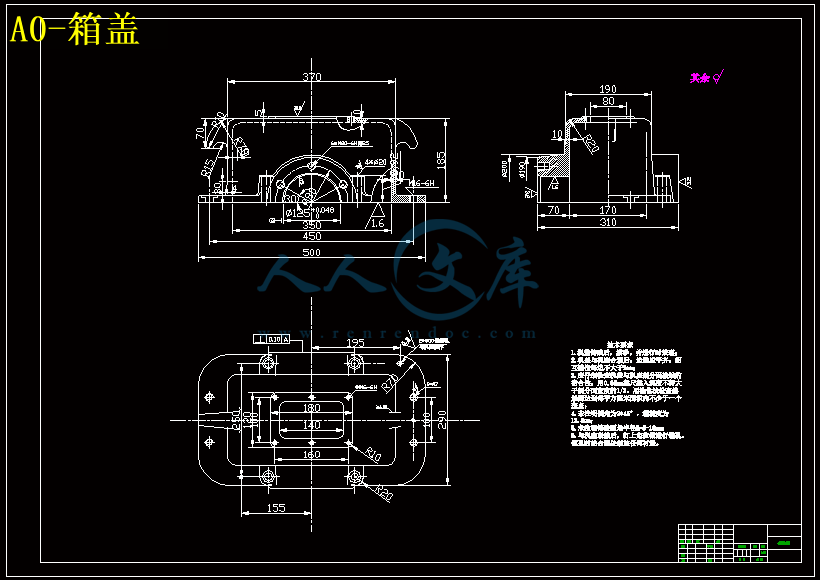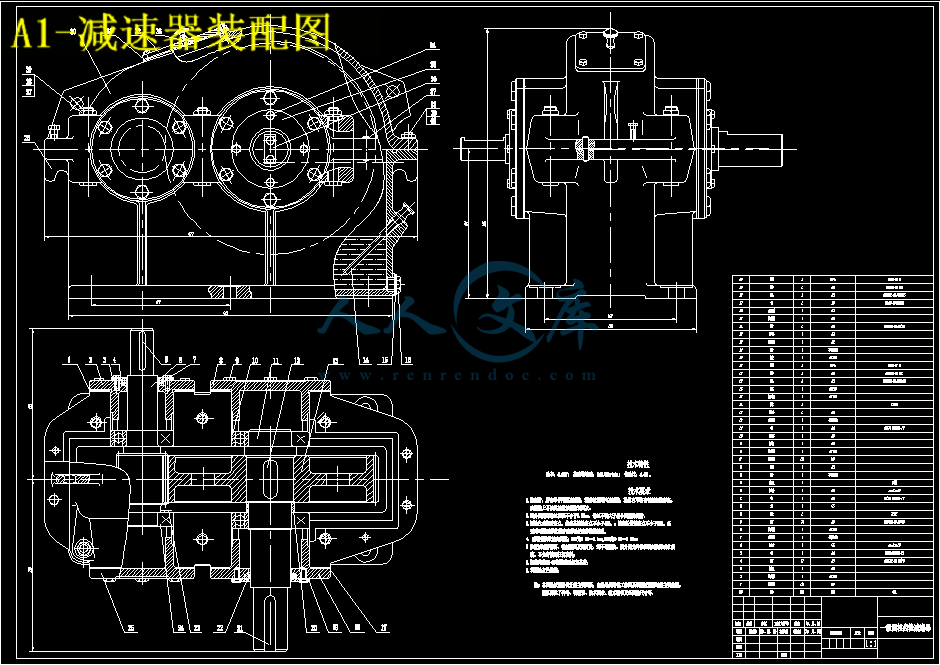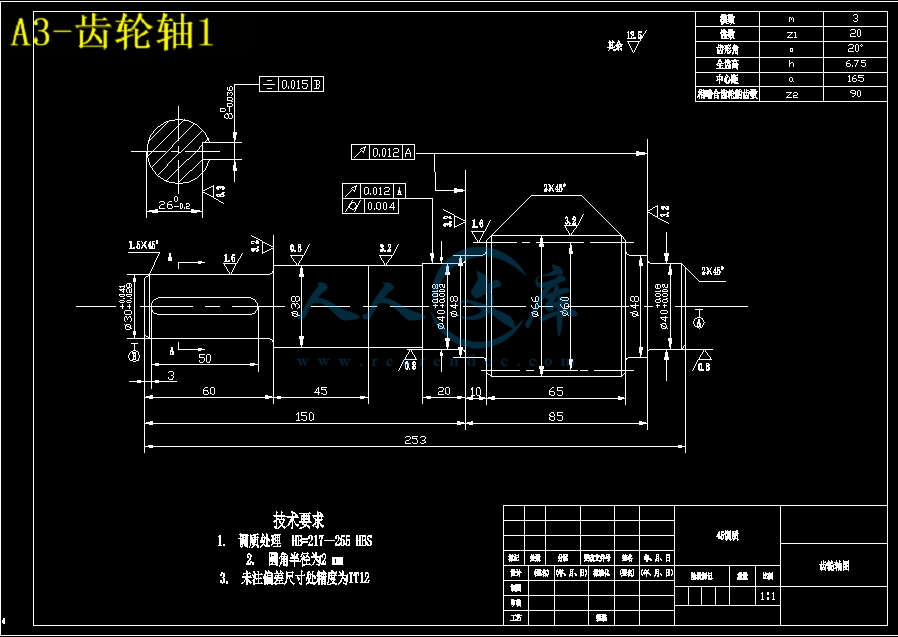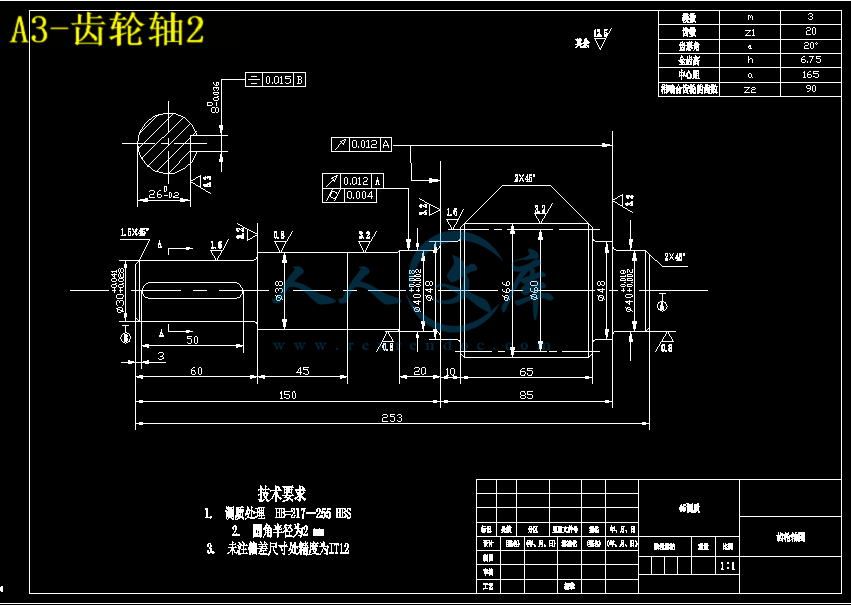目 录
1. 引言 1
1.1 我国草业的现状及研发前景 1
1.2 工作原理 3
1.3 牧草生长不良原因分析 3
2. 牧草复壮促生破土切根机的研究与设计 3
2.1 总体结构和工作原理分析 3
2.2 悬挂架 4
2.3 直切刀的选择 5
2.4 传动装置的选择与设计 9
2.4.1 传动装置的选择 9
2.4.2 齿轮变速箱的工作原理 10
2.4.3 齿轮变速箱的设计 10
2.5 切根机切根宽度和深度的设计 14
2.5.1 切根宽带的设计 14
2.5.2 切根深度的调节 14
2.6 滑块机构 15
2.7 凸轮机构 15
结 论 16
参考文献 17
致 谢 18
毕业设计说明书中文摘要
牧草切根机的设计——传动装置
摘 要 我国地域辽阔,畜牧业发达。很多地区种植着牧草,近年来由于土壤条件的变化,使得好多地区牧草生长状况出现了不良效果。分析了草场不同土壤条件对牧草生长和草场生态恢复的影响;研究了退化草场机械化破土切根技术和模式;探讨了高坚实度土壤条件的草场破土机理与根茎型或根茎疏丛型牧草横走根茎切根方式,针对典型草场板结严重且横走根茎错节致使自繁促生能力下降等问题。根据研发要求,应用力学和机械运动学等理论,设计了牧草复壮促生破土切根机具。该机采用齿轮变速箱传达改变动力,应用凸轮机构驱动直切刀对牧草进行垂直切根,减小了切根阻力和切缝宽度,通过简单操作可实现对不同间距、不同深度牧草进行切根作业,从而达到切断亚表层下的横走根茎、改良草地,扩繁促生的效果。经速度、加速度和受力分析证明,该机满足了设计要求,切割速度快,破土能力强,对土壤表皮损伤小,是比较理想的牧草切根机械。
关键词 牧草切根机 直切刀 凸轮 齿轮变速箱
毕业设计说明书外文摘要
Design of Rejuvenation and Acceleration Root-cutting
Machine—Gearing
Abstract
In order to counter the problem of reduced health promotion ability in typical grass with compacted roots, a root cutting machine was designed for pasture . The machine used came driven of direct cutter to cut root vertically, greatly reducing resistance and perturbations of soil surface while cutting the root,which reached easy work in varies of forage . The machine destroye- dsolid soil, improved grassland, and increased grass yield . Asproven by analyzing the velocity, acceleration and force of the machine was able
To meet the needs of designing . It is a more ideal agriculturalmachine for forage grass .
Keywords Forage grass Root cutting machine Direct cutter Design
牧草切根机的设计——传动装置
1.引言
牧草业是我国现代农业的重要组成部分。我国草地面积广阔,但近年来三化面积逐步扩大。牧草产量降低。针对这一情况设计研究牧草复壮促生机具。以改良牧草的生长情况。
破土切根技术是指在不破坏天然草地植被的情况下,对草原表皮进行破土切缝的一种草地培育措施。此技术大大改良了退化草场, 解决了草畜矛盾,为我国畜牧业的发展打下了良好的基础。我国对牧草切根这一破土切根复壮促生技术发展较晚,起步于20世纪80年代,通过对国外的先进经验和国内大量的试验数据积累, 黑龙江省穆棱林业局解全民等研制出自走式果岭梳草切根机, 中国农业大学草业机械工程技术研究中心主任王德成教授研制出9QD2430 型草地点线式破土切根机和9QP2830型草地盘齿式破土切根机,中国农业大学张淑敏等研制的多功能点、条式牧草切根机。虽然我国对牧草切根机进行了大量的试验和研究设计,但相对于欧美等发达国家来说,我国在草地畜牧业上的投入相对较少,在技术水平、制造手段和工艺设计等方面还存在很大差距, 我国牧草切根机的设计仍然不够成熟,仍需进一步改进和完善。
本设计针对我国天然草场严重退化现状,采用以机械化切根再不破坏土壤表皮的条件下达到牧草复壮促生,来改善我国的牧草生长。
1.1 我国草业的现状及研发前景
草业是现代农业的重要组成部分。它关系到种植业跟养殖业,也关系到我国的乡村生态发展,是农业的基础产业。但我国现在的牧草种植地土壤三化情况严重,大大影响了我国牧草业的产量和发展。据2006 年国家统计局统计资料,我国草原面积4亿公顷 ,占全国总土地面积的41.67%,占世界草地面积的12.5%,是耕地面积的3.7倍,林地面积的3.1倍。其中,可利用草地资源31333万公顷占国土面积的32.64%。我国的草地生产力条件得天独厚,生产潜力巨大,依靠丰富的草地资源发展畜牧业对建设小康社会、调整产业结构、保障粮食安全体系和促进经济发展与农民增收等诸多方面都具有重要意义。但由于不合理的利用制度和不当的放牧方法,我国草原出现大面积退化、沙化和盐碱化情况。国内外大量事实证明,对天然草场进行改良和建立人工草场是提高草场生产能力、解决草畜矛盾并使畜牧业生产稳定、高速、优质发展的一项关键措施。退耕还草、保护和建设生态环境都与草场改良和建立人工草场相关。运用机械化技术手段改良退化草场可以兼顾生态效益与经济效益,具有效率高、效果好的特点。天然草场经改良后与未经改良的草场相比产草量提高很多。因此对退化草场进行改良既是发展畜牧业的必然要求,也符合国家保护生态环境的要求。在我国的黑龙江、吉林、辽宁三省及内蒙古自治区东部的呼伦贝尔市、兴安盟、通辽市和赤峰市等地区,分布着以羊草在主要植被的温性草甸草原区,草场总面积约1224.4万公顷,是我国发展草原畜牧业十分宝贵的草场资源。该地区由于长期无养息超载放牧和家畜踩踏啃食,土壤板结严重,土壤板结层深达25~35cm,土壤坚实度达到2.87~4.87kg/cm。同时,羊草等多年生根茎型禾本牧草的根茎分布于50~200mm的土层或更深的地方,其地下横走茎每年延伸可达 1~1.5m,盘根错节的根系致使土壤透气性减弱, 含水量和孔隙度下降,容重增大。研究表明在此地区更益采用在亚表层切根、深层松土的方法对退化草场进行改良。实施切根松土改良就是在不破坏原植被的前提下,通过机械手段切断横向须根,划开板结层,进行草场底层松土,改善土壤的透气、蓄水条件。切断后的草根能充分吸收养分,提高草产量。深入研究我国根茎型退化草场退化状况和机械化改良工艺,以驱动型土壤耕作机械设计理论为基础,研制开发适用于我国牧区普通牧民适用的驱动型退化草场破土切根改良专用机,即具有经济效益意义又具有生态效益意义。通过对这一问题的解决。为我国畜牧业的发展打下了一个良好的基础 在整个机具的研发过程中,对草场破土切根机性能的研究是尤为重要的,而在整机性能当中刀具的破土性能更是重中之重。我国对牧草切根这一破土切根复壮促生技术发展较晚,起步于20世纪80年代,通过对国外的先进经验和国内大量的试验数据积累,黑龙江省穆棱林业局解全民等研制出自走式果岭梳草切根机,中国农业大学草业机械工程技术研究中心主任王德成教授研制出9QD2430型草地点线式破土切根机和9QP2830型草地盘齿式破土切根机,以及中国农业大学张淑敏等研制的多功能点、条式牧草切根机。虽然我国对牧草切根机进行了大量的试验和研究设计,但相对于欧美等发达国家来说,我国在草地畜牧业上的投入相对较少,在技术水平、 制造手段和工艺设计等方面还存在很大差距,我国牧草切根机的设计仍然不够成熟,仍需进一步改进和完善。本文根据机具研发要求,设计出一套破土切根装置,和破土根刀具。工作性能优越。操作简单。
1.2 工作原理
本文针对我国天然草场严重退化现状,提出机械化切根复壮分蘖促生自我繁育工艺,研制开发适用于我国草场的切根机。该机具采用三点悬挂架连接于农业拖拉机尾部。通过链条连接拖拉机动力与齿轮变速箱,从而是动力传递到工作机具。通过齿轮变速箱改变调节工作动力。再经凸轮机构传达到直切刀。破土切根。采用直切方式,破土阻力小,切割快。满足初始的设计要求。该机具可调性高,可以试用于不同的牧草生长地。直切刀之间的间隔可以通过套筒装置调节,以适应于行宽不同的土地,进行多行同时切割。工作量适宜,减少了相应的工作时间。通过限深轮可以适应不同深度的切割。









 川公网安备: 51019002004831号
川公网安备: 51019002004831号